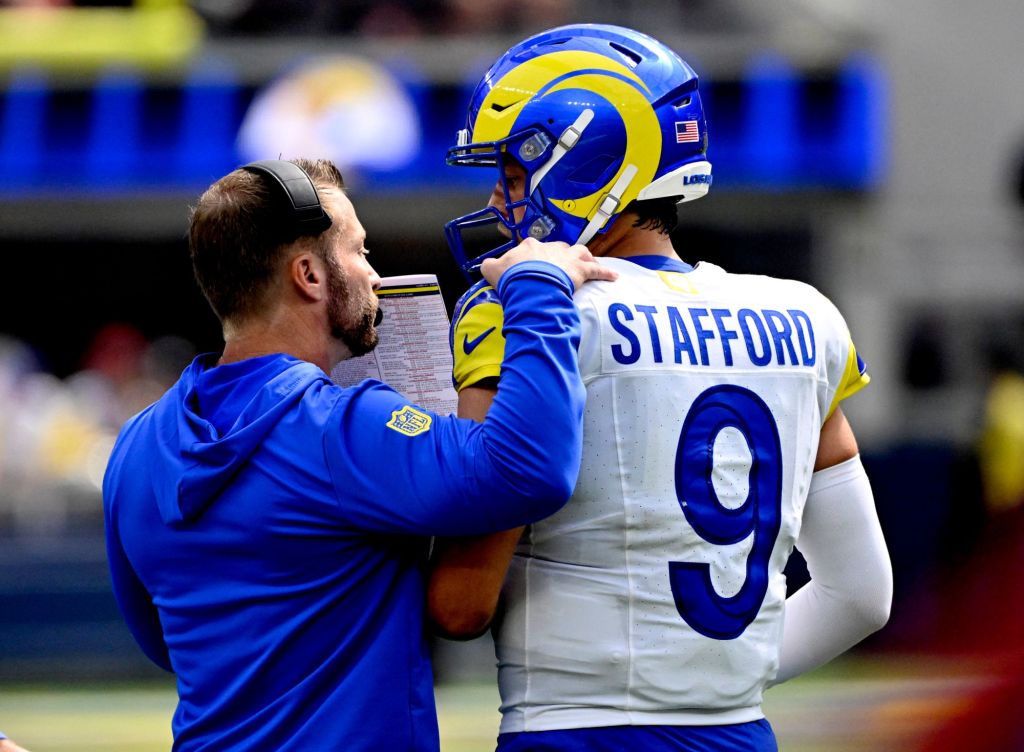
The Rams’ restructuring of quarterback Matthew Stafford’s contract in February cemented who will be the team’s starting quarterback in 2025. But the nature of the restructure leaves plenty of questions about how the Rams approach the position in 2026 and beyond.
The Rams’ decision makers, from head coach Sean McVay to general manager Les Snead, have spoken about how they want Stafford to play for the franchise “as long as he wants to play.” Given the level that Stafford has performed the past couple of seasons, elevating a team beleaguered by injuries into two straight playoff appearances, the interest in a continued partnership makes sense.
But Stafford turned 37 in February. And the Rams only restructured the first of the two years remaining on Stafford’s deal, meaning both sides will have to go through contract talks next year, too.
Now, enter a draft class in which teams are uncertain which quarterbacks beyond Cam Ward deserve to be top picks. Players like Colorado’s Shedeur Sanders and Ole Miss’ Jaxson Dart could slip into the late first round, which would present the Rams a decision to make with the 26th pick.
Go all-in on building a contender around Stafford in 2025? Or make a decision with an eye toward 2026 and beyond by selecting a potential successor who can benefit from an apprenticeship behind Stafford this fall?
“Even if we identified someone, sometimes it’s hard to acquire them and then you get into, okay, wait a minute. We do have Matthew and we want to chase ‘special’, whatever special may be so maybe it’s best at that moment to draft another position player and keep going that way,” Snead posited last month on a Zoom call with reporters. “You’re always balancing those two things but finding the next QB, that one is easier said than done. I think we’ve seen that over the course of history, the Green Bay Packers have done a nice job.”
The Packers have twice this century used a late first rounder to get their quarterback of the future. First it was the No. 24 pick in 2005 for Aaron Rodgers, who learned behind Brett Favre for three years. Then it was the 26th pick on Jordan Love in 2020 to learn behind Rodgers.
The first case didn’t surprise anybody; Favre had been hinting at retirement. The second did, as many wondered why the Packers didn’t take a player — namely, a receiver — who would help Rodgers win in Green Bay.
That’s the tightrope the Rams have to walk this week as they decide what to do with the No. 26 pick. Sanders and Dart could fall because they are flawed prospects. Sanders’ fundamentals are shaky and could lead to costly mistakes in the NFL. Dart is coming from an Ole Miss offense which emphasized predetermined reads and doesn’t necessarily translate to the NFL.
But, as Snead said, learning behind Stafford would ease a lot of those concerns for the Rams, long-term. But does that approach outweigh the possibility of going all-in on 2025?
The Rams were the only team that gave eventual-champion Philadelphia any kind of fight in the postseason. A receiver to line up next to Puka Nacua and Davante Adams could be extremely beneficial to the team’s 2025 outlook. So could a linebacker or cornerback, should the right one fall to the end of the first round.
An offensive tackle would likely be a long-term choice, but it could benefit Stafford in 2026 should right tackle Rob Havenstein retire after this season. And the Rams could trade back and address any of those four positions, or tight end, while adding additional draft capital to strengthen the roster.
That approach would punt the quarterback question at least a year. It could potentially mean that Stafford retires without the Rams having a replacement ready, and without the draft capital to acquire one.
Does that outweigh the benefits of building around Stafford in the short term? That’s what Snead, McVay and the rest of the Rams’ braintrust will have to decide this week.
Originally Published:



